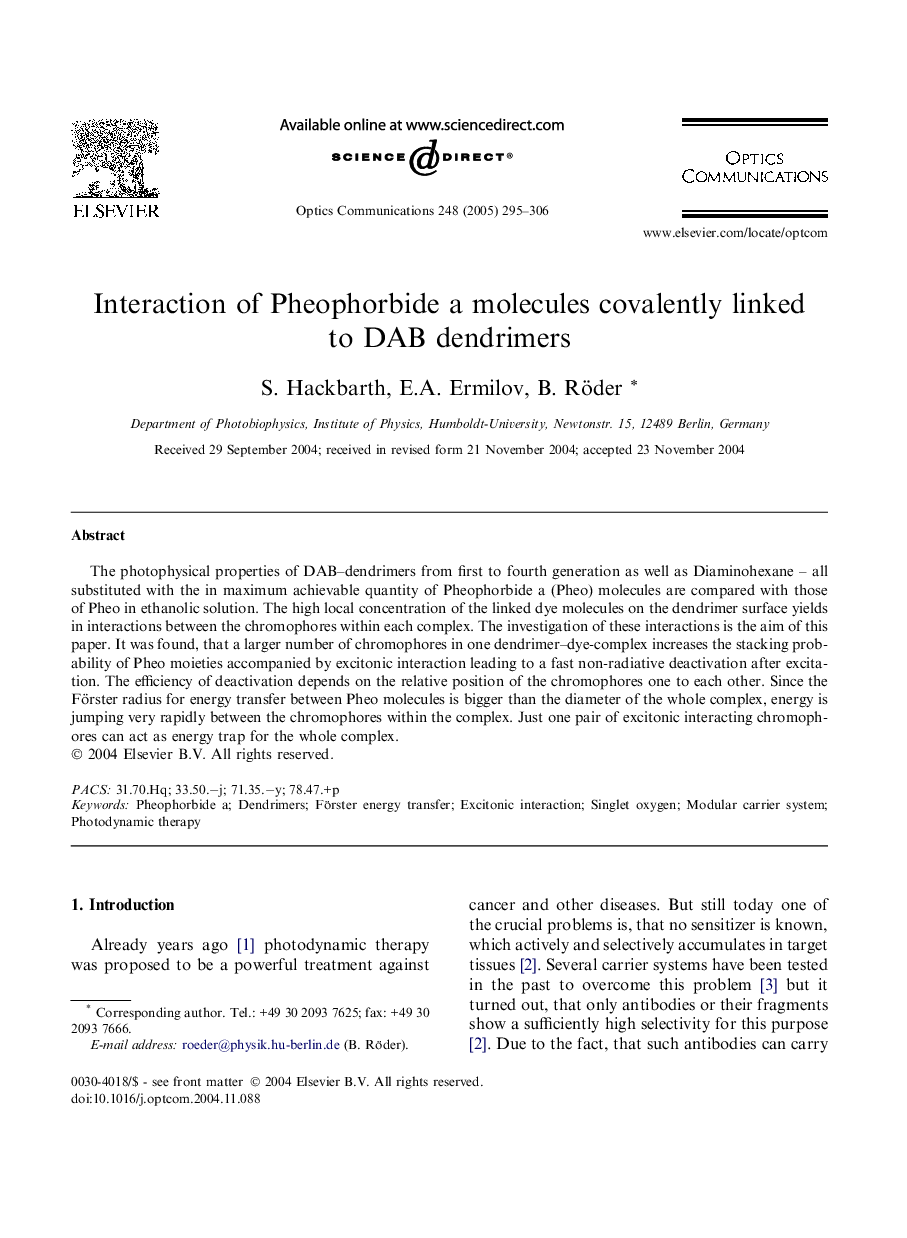| Article ID | Journal | Published Year | Pages | File Type |
|---|---|---|---|---|
| 9786008 | Optics Communications | 2005 | 12 Pages |
Abstract
The photophysical properties of DAB-dendrimers from first to fourth generation as well as Diaminohexane - all substituted with the in maximum achievable quantity of Pheophorbide a (Pheo) molecules are compared with those of Pheo in ethanolic solution. The high local concentration of the linked dye molecules on the dendrimer surface yields in interactions between the chromophores within each complex. The investigation of these interactions is the aim of this paper. It was found, that a larger number of chromophores in one dendrimer-dye-complex increases the stacking probability of Pheo moieties accompanied by excitonic interaction leading to a fast non-radiative deactivation after excitation. The efficiency of deactivation depends on the relative position of the chromophores one to each other. Since the Förster radius for energy transfer between Pheo molecules is bigger than the diameter of the whole complex, energy is jumping very rapidly between the chromophores within the complex. Just one pair of excitonic interacting chromophores can act as energy trap for the whole complex.
Keywords
Related Topics
Physical Sciences and Engineering
Materials Science
Electronic, Optical and Magnetic Materials
Authors
S. Hackbarth, E.A. Ermilov, B. Röder,
